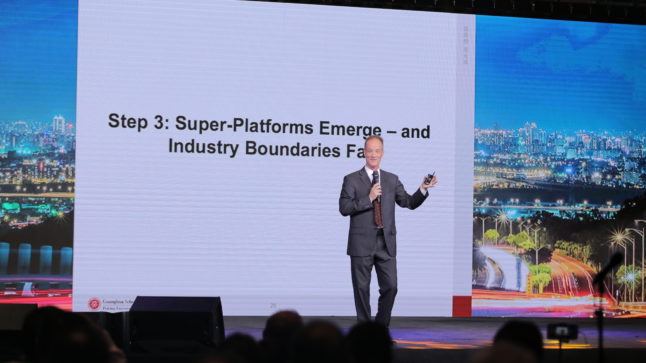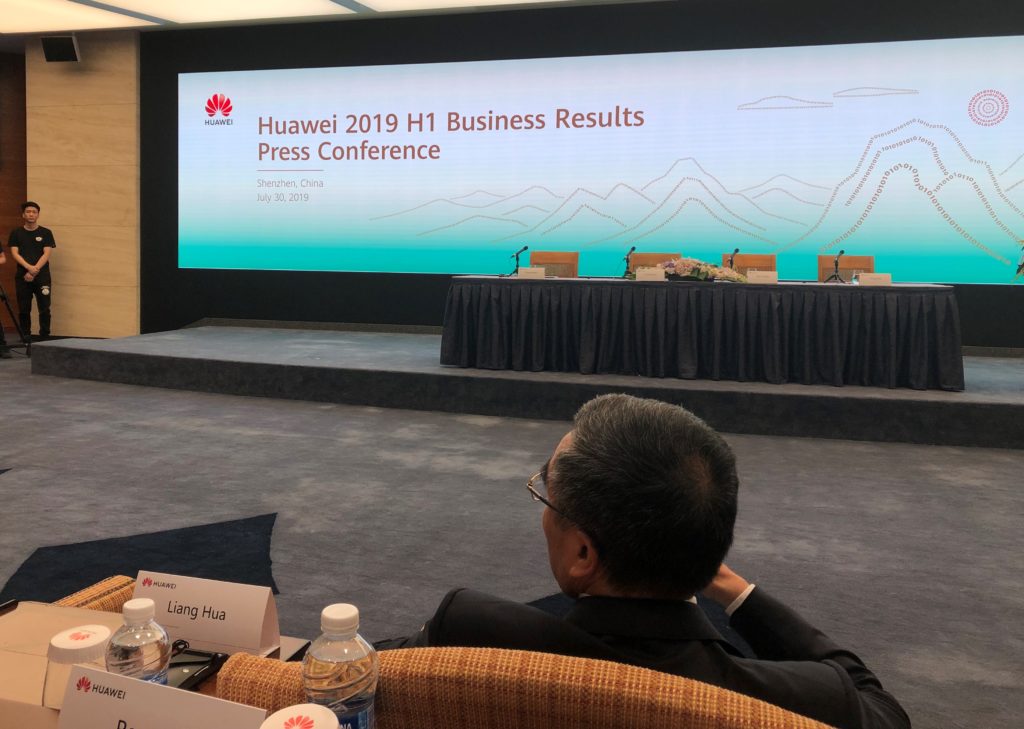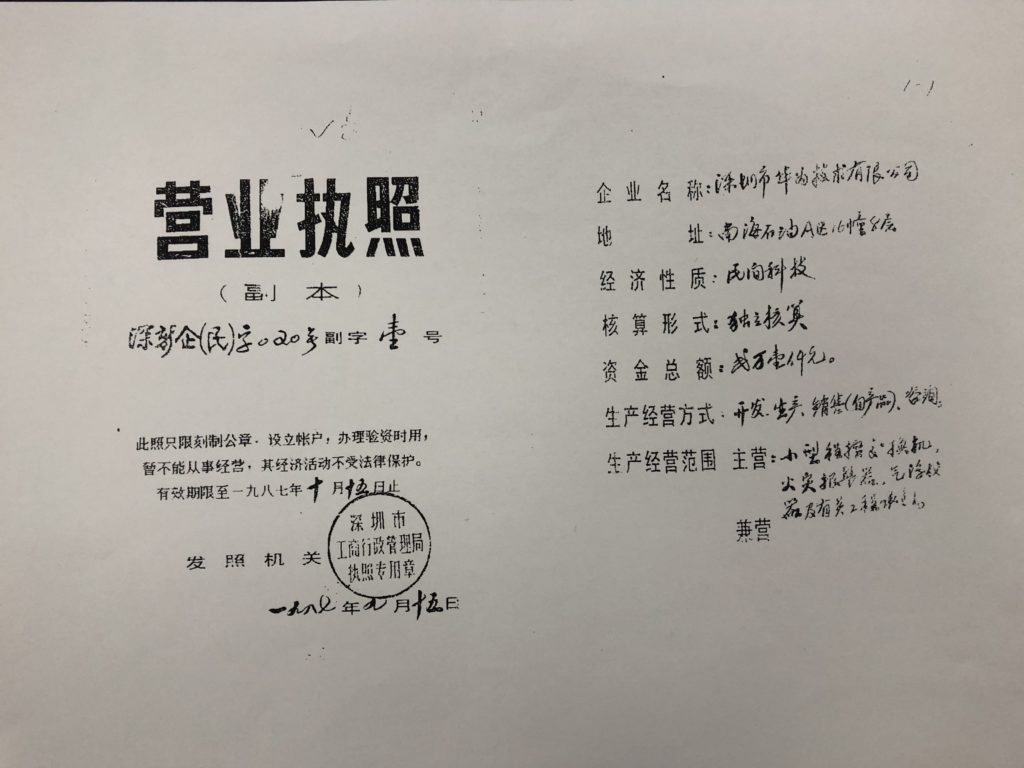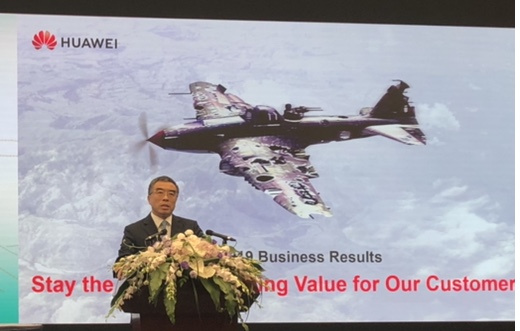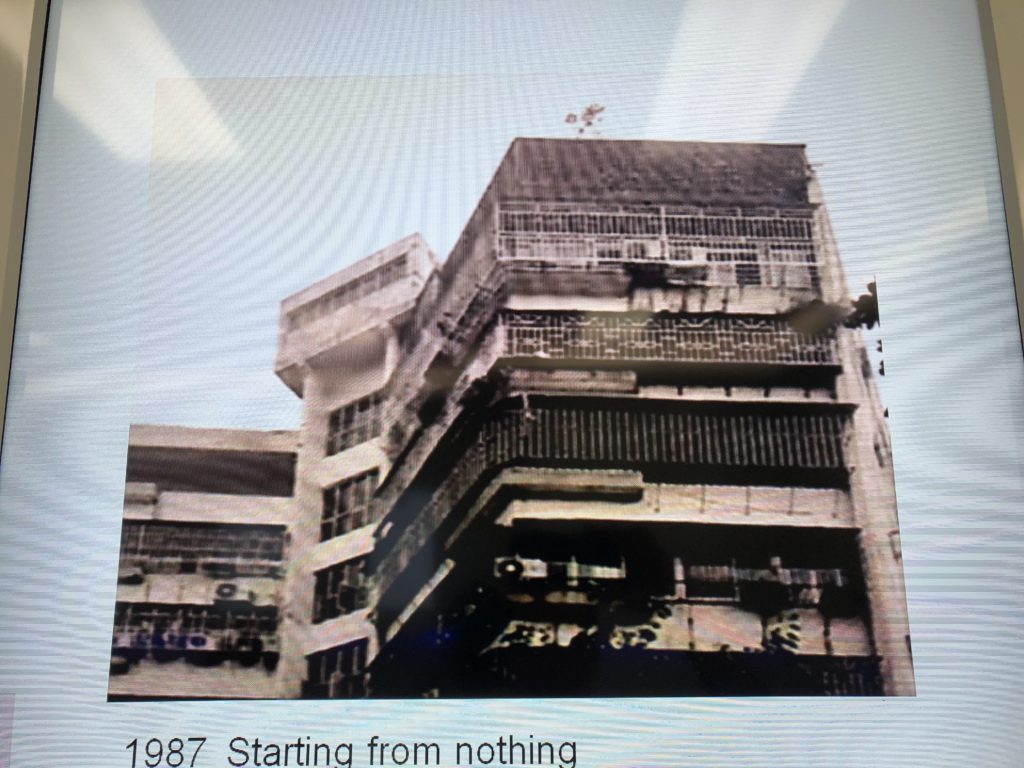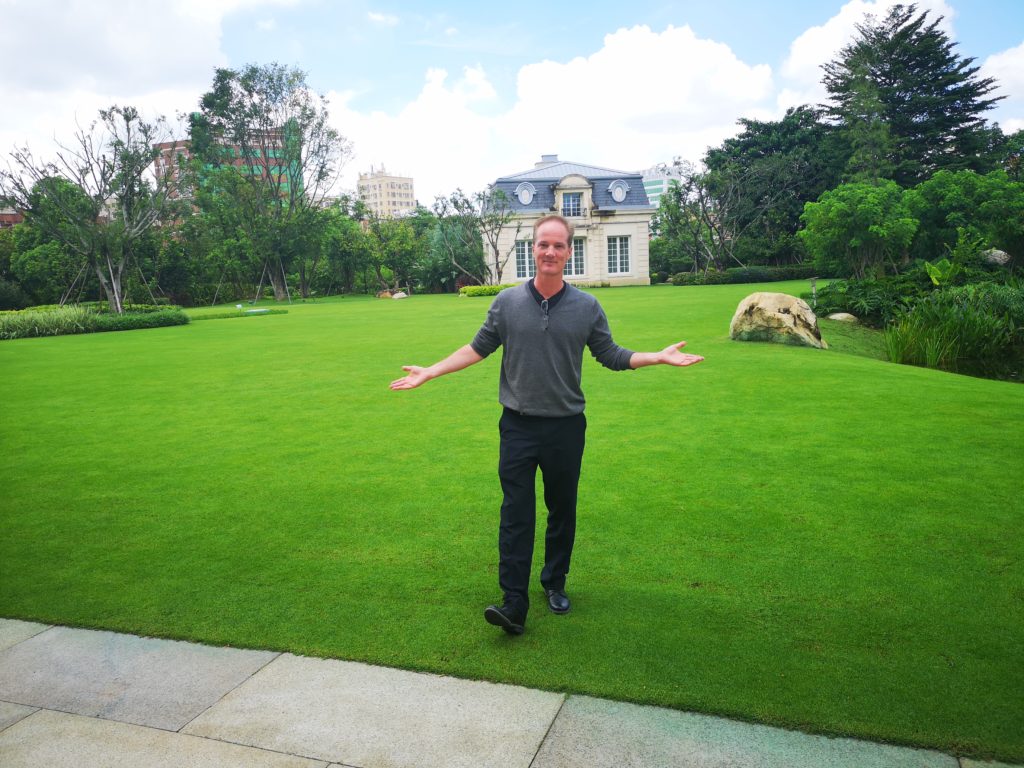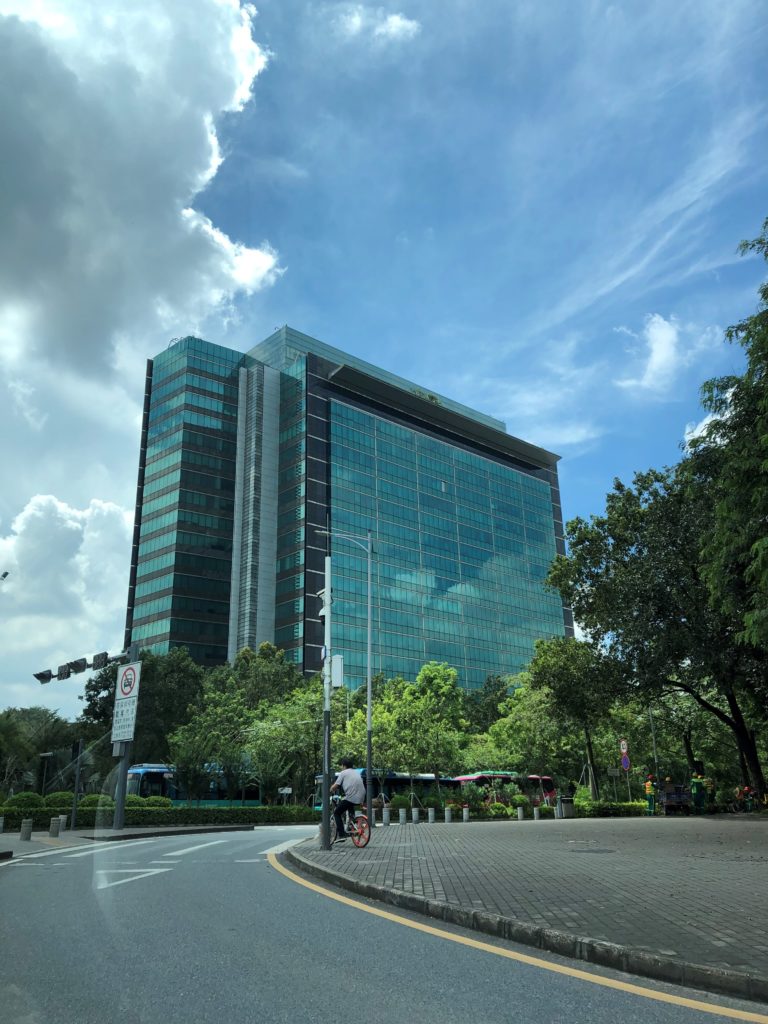I had a pretty great trip to the Huawei headquarters for their half year earnings’ release. Fascinating discussions with management. Some touring of the facilities. And I even got a good seat at the big press conference. FYI. Here’s what the back of Chairman Liang Hua’s head looks like.
I’ve got 5-6 articles coming out about Huawei, focusing on what I think are the bigger business questions going forward. This article (in four parts) has my main take-aways from the trip.
A quick disclaimer. I have no position, income or other business relationship with Huawei. I am 100% independent and my opinions and writings are my own. I also don’t write about politics. My expertise is in digital strategy and in figuring out who is going to win.
Ok. Here are my 5 take-aways from my visit.
Take-Away #1: Huawei Is 100% Back in “Battle Mode”.
Founder Ren Zhengfei has been in the press recently talking about Huawei going into “battle mode”, stating the commpany is facing a “live or die moment”. And he is using lots of military language, with “commando squads, warplane and tank analogies.
I think his use of military language is being understood.
A lot of the Huawei culture and lore centers on the idea of perseverance and fighting through difficult times. And the company has long used words and phrases like “persevere”, “dedication”, “capacity to suffer”, “willingness to suffer”, and a “fight for the future”. When the founder talks about going into battle mode, he is calling on the company’s culture and history. For example:
- The company was launched in a small office in Shenzhen in 1987 by 7 founders. And they were almost broke. Their initial capital was about $3,500 and they struggled to survive. In fact, they now say they didn’t really like the name Huawei but couldn’t afford the license fee to change it.
- Their early years were also a struggle to stay alive. They couldn’t compete in the main China markets so they focused on small projects in third and fourth tier Chinese cities.
- Their early international moves were similar. They focused on taking difficult international projects that established companies couldn’t or wouldn’t take.
- And their stories of later international projects include putting antennas up in the Himalayas. And of being the last foreign company to pull out from war-torn areas like Libya and Venezuela.
The company culture has long been based on a struggle for survival. Note: Here is their first business license.
And at the press conference, Chairman Liang Hua also characterized the current situation as a “fight for survival”. And he began his talk with a picture of a damaged bomber still flying.
So it is not surprising that their reaction to the US ban has been to go into full battle mode. They are not downplaying the difficulty of the situation. They are not hiding the numbers. If anything, they are actively promoting the situation to their employees and other stakeholders. They are telling everyone they must come together, batten down the hatches and fight through this. And they are calling on their history of being able to take pain that others can’t. In short, they are using this situation and going into battle to mode to both mobilize and to re-energize the company.
And perhaps this is what Huawei needs.
The company is now +190,000 employees. It is, by definition, much more bureaucratic. A lot of the senior managers and decision-makers are rich now. And the company is no longer the underdog. They are the market leader and cash rich. One of their biggest risks recently has probably been complacency. And Ren Zhengfei has long spoken about how Huawei’s long-term survival depends on avoiding such complacency. And of continually re-infusing the organization with new blood.
Battle mode is really about calling on perseverance. And dedication. It is the corporate equivalent of adopting “pain now for gain later” behavior. And I really like this in companies. I think it is very effective. I also like it in individuals. And in countries.
- Warren Buffett and his partner Charlie Munger frequently talk about this topic. They use the terms delayed gratification and long-term thinking. Buffett frequently remarks that anyone sitting under a tree today is benefiting from someone planting a seed long ago.
- Legendary emerging markets investor Thomas Russo also looks for this in companies. He calls it a “capacity to suffer”. He likes companies that can suffer through difficult years in order to win big in the long-term.
- In fact, in China, you frequently hear the encouragement to “chi ku 吃苦”, which literally means the ability to eat your own tears. It’s considered a strength.
So that was my first take-away from my visit. That the company is going into 100% back in battle mode, which has long been its posture and culture. This means adopting “pain now for gain later” behavior. And it means using the crisis to re-invigorate and re-energize the organization. This is bad news for Huawei’s competitors.
Take-Away #2: In Practice, Battle Mode Means Doubling Down on Sales & Marketing and Research & Development.
From 1988 to around 1994, Huawei was a small manufacturer with no money, no technology, and virtually no resources. They really had very little ability to compete with Ericsson, Nokia or ZTE. And they spent these early years relegated to activities like importing PBX products from Hong Kong / Japan. Here is their first office.
So early Huawei focused on the only resource they had, which was people. And they targeted their people to two activities – serving customers and doing research and development. The goal was to do both better than anyone else.
- For customers, they didn’t just manufacture and sell them products. They solved their problems, whatever they may be. They hustled more than others. They went where their competitors wouldn’t. Customer-centricity became their core strategy – and their lifeline. Because these customers were providing the cash that kept the company – and its R&D – going.
- For R&D, they focused on building their own products. Relying on imported foreign products was too risky. So even as early 1993, when Huawei was just 600 employees, about half of their staff were doing R&D.
Huawei is still largely built around these two activities – service/sales and R&D. And while the company is routinely described as a telco manufacturer, only about 15% of staff actually work in manufacturing. 35% of staff work in marketing and sales / service. And about 45% (80,000) work in R&D.
The company is still overwhelmingly about these two groups of people and how they are organized and motivated. And over thirty years, fairly sophisticated structures and performance metrics have been developed internally to organize these groups. Huawei’s core skill and key competitive advantage today is arguably more the HR strategy for its +190,000 people than anything else.
I will go into detail about the organizational structure and performance metrics in a subsequent article. But the basics idea is that the company tries to maximize team performance and individual dedication, in both the short and long-term. This is how the company’s value is created and continually re-created. And the the company tries to distribute the created value along these same lines. The employee share ownership program that is in the news so much recently is a big part of this value creation and distribution system.
This is an important point. The value created by the company’s employees is mostly not distributed to shareholders or debt holders or even to retired employees. The stakeholders that most benefit from Huawei’s created value are the current top engineers and sales / service people.
So when Huawei goes into battle mode, they are (mostly) doubling down on this approach. You will see them attempt to ramp up their spending and performance in sales & marketing and research & development. And their HR strategies will be a big part of both. More on this in the next article.
***
That is it for Part 1. In the Part 2, Part 3 and Part 4, I’ll go through more take-aways. Below are some photos from the Shenzhen campus, which is amazing.
Cheers, jeff
- Post US Export Ban, Huawei R&D is Going for Tech Leadership (pt 2 of 4)
- The Real Impact of the Huawei Export Ban Is Still on the Way. (pt 3 of 4)
- Huawei Is Digging In for a Long-Fight. And They Are Probably Going to Win. (pt 4 of 4)
I am a consultant and keynote speaker on how to accelerate growth with improving customer experiences (CX) and digital moats.
I am a partner at TechMoat Consulting, a consulting firm specialized in how to increase growth with improved customer experiences (CX), personalization and other types of customer value. Get in touch here.
I am also author of the Moats and Marathons book series, a framework for building and measuring competitive advantages in digital businesses.
Note: This content (articles, podcasts, website info) is not investment advice. The information and opinions from me and any guests may be incorrect. The numbers and information may be wrong. The views expressed may no longer be relevant or accurate. Investing is risky. Do your own research.
